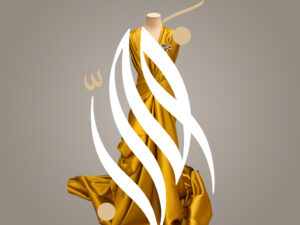
Fabrics: the raw material of fashion
“A couturier must be an architect for design, a sculptor for shape, a painter for colour, a musician for harmony,
and a philosopher for temperance”
Fashion design is a unique journey of creativity. Its inspiration can come from anywhere: a certain piece of fabric, a piece of art, or cultural heritage. It offers excitement to consumers who crave new and beautiful designs.
Fabric is fundamental element of fashion design that is at the heart of the creative process. It enhances and gives rise to the designer’s creative impulse and supports their ideas. It assists the couturier in sculpting the garment to create its shape and it is the painter of colour that gives gaiety to the design.
Fashion Design and Fabric Behaviour
How we now live fashion attribute its structure to many factors, including the influence of industry designers & manufacturers. They create numerous seasonal trendy designs that are aggressively marketed to fashion-conscious consumers, which has caused vast and almost unlimited variation. There is the mass-production of ready-to-wear clothing (fast fashion) at lower cost, aimed at mainstream consumers, and the haute couture that caters to niche consumers. But, the main element differentiating fast fashion brands and haute couture brands is the quality of the fabric, alongside other elements.
Fabric has a great influence on the choice of garment style’s, as its characteristics can change the finished item. For example, some fabric can be pleated but others cannot be. Characteristics such as weight, thickness, and drape are essential to create the harmony with the desired design. Designers and couture/tailors typically focus on the fabric’s “behaviour” because it is an essential element when creating a particular style. An informed understanding of how different fabrics act makes the selection of fabric easier. Every stage of fabric manufacturing influences the final piece. Whether it’s something simple like the quality of the fibres or something more complex like the weaving process, even the same raw materials can produce different outcomes.
Good fabrics have a cost
fashion has led to rapid development and innovation in fabric production. The innovation in raw materials, and the fusion in blends exploit unique qualities of the natural fibres and the structural engineering of the man-made fibres. Their properties and advantages have led to produce textiles that meet all needs and different conditions and uses and improved specifications, suitable for more applications. However, many high-end fashion companies stick with quality materials and methods, which has led to a clear divide between markets and production methods. Fabric manufactured in the Far East has increased its supply of low-cost, high quantity textile. On the other hand, European producers’ attitudes to fabric production change; they looked for higher value products rather than quantities. This caused vast and almost unlimited variations in the world of fabric.
For example, within the fast fashion world, many companies use something we know as planned obsolescence. It involves designing a product with an artificially limited useful life or a purposely fragile design, so that it becomes obsolete after a pre-determined period upon which it detrimentally functions or suddenly ceases to function, or might be perceived as unfashionable. The reasoning behind this should be obvious. Reducing the lifespan of clothing forces consumers to buy more, meaning greater long-term profits for manufacturers. But, it has a much greater environmental impact. It means more resources during production and far more waste at the end of the lifecycle.
As commodities become scarce and budgets tighten, customers will hopefully become more inclined to consider style, quality, wear, and performance factors rather than fast-fashion. While these clothes are more expensive initially, they are more cost-effective in the long term. Opting for timeless pieces of high-quality clothing also means they can withstand short fashion trends.
Changing how fabric is produced also has an impact on cost. For example, producing wider rolls of fabric is more economical because it means fewer metres for the manufacturer and generally results in less waste overall.
Sourcing Fabric for Greater Quality and Lifespan
At Faye, we strive to source high-quality fabric and print designs from the finest creative hotbed of fabric manufacturers’, rooted in centuries of culture and beauty. The manufacturing company’s quality standards are important to us, as we ensure that the manufactures we source from have recognised certifications.
When we source any fabric, we explore its nature and properties, the way the fabric behaves and its potential durability. We then sample it by manipulating and draping it to observe how it relates to the body and consider how it feels next to the skin. The initial fabric selection is influenced not only by fashion trends but also by our customers’ garment style preferences.
We provide care and maintenance instructions for all fabric we sell. We strongly believe that when a good washing, and drying garments can prolong the fabric life and also prevent the colour from fading.
We have rich fabric knowledge, and include the most essential information about fabric on our website to help you make the right purchase decision. In turn, this will help you to achieve the style result you are looking for. When purchasing from us you will feel inspired, educated, and confident in purchasing the piece you love.


Siham Ahmed Al Maskari
Managing Director
Dar Faye Enterprise
Muscat , Sultanate of Oman




